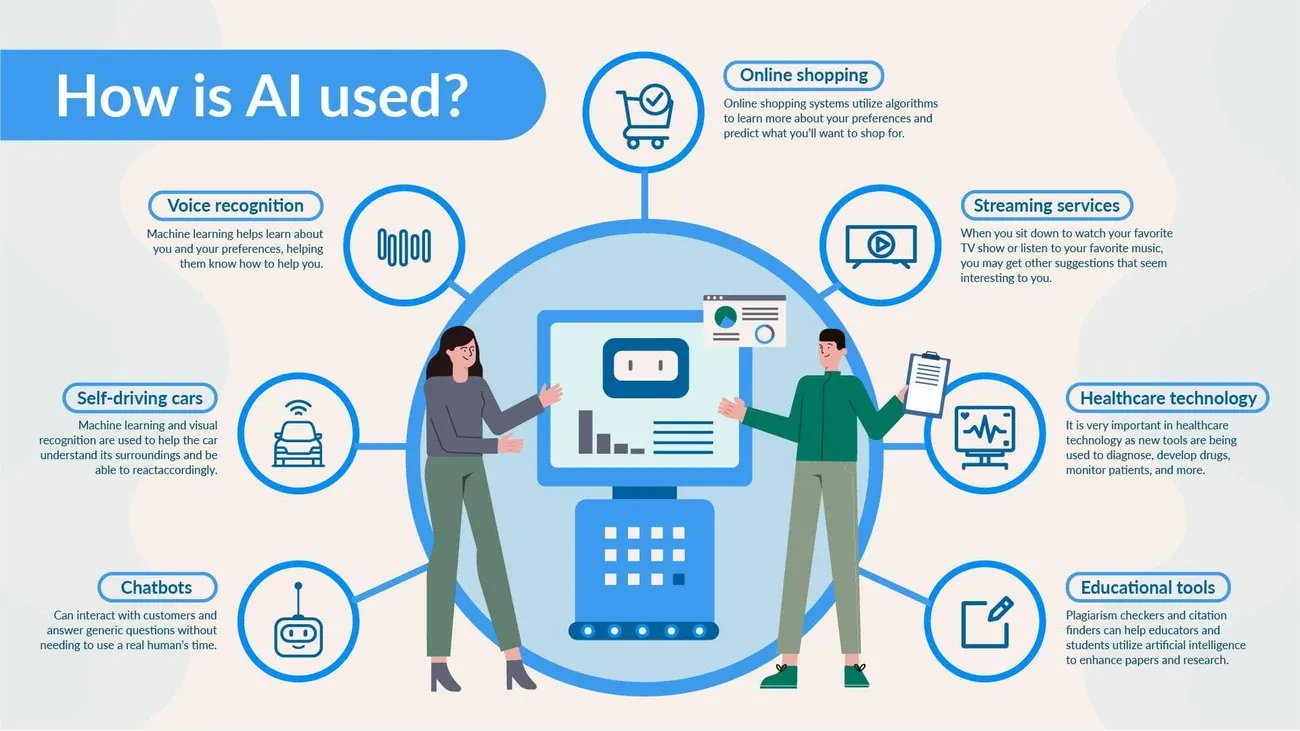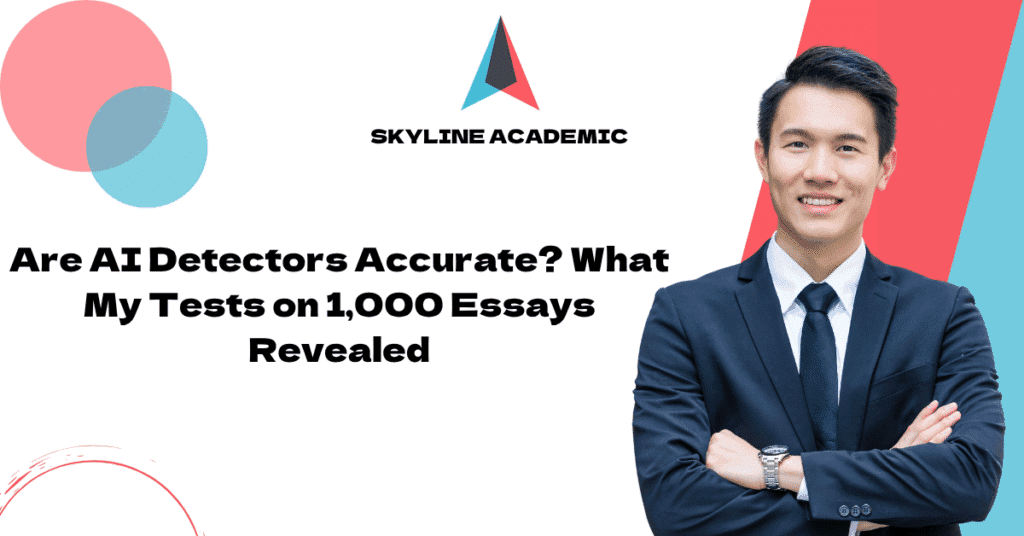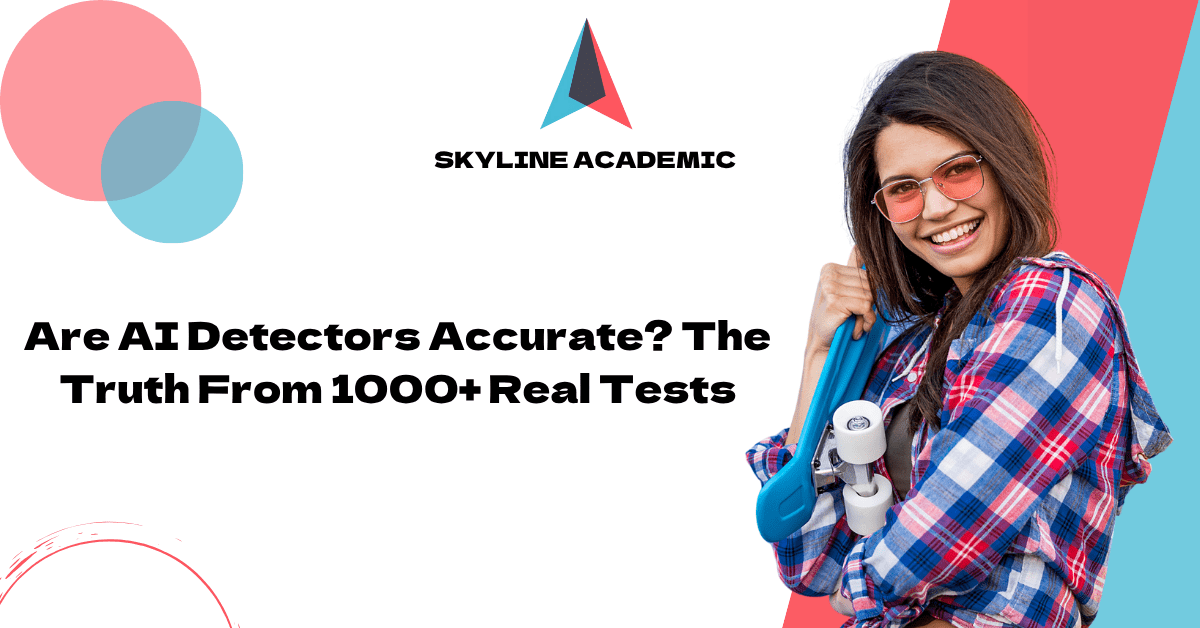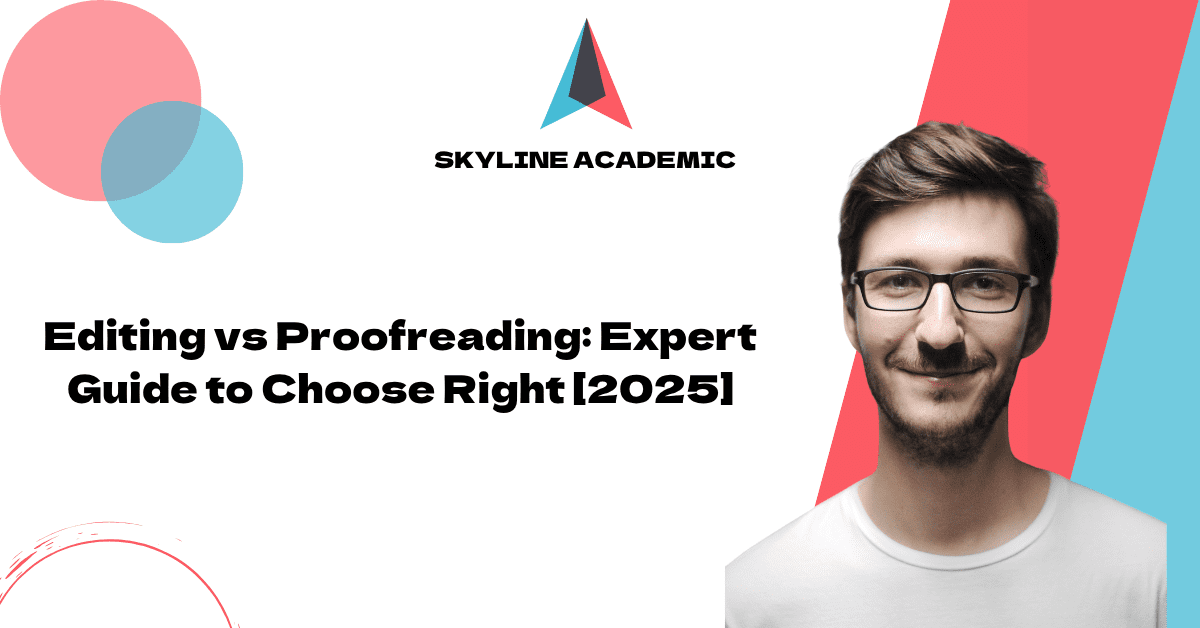Are AI Detectors Accurate? What My Tests on 1,000 Essays Revealed
False accusations of AI-generated content can seriously impact people’s lives, but how reliable are AI detectors? A Bloomberg test shows that even popular AI detectors like GPTZero and CopyLeaks have false positive rates of 1-2% when they analyze human-written essays . These error rates suggest that around 223,500 essays could be wrongly labeled as AI-generated, assuming humans wrote all of them .
My extensive tests on 1,000 essays revealed troubling patterns about AI detector accuracy in educational environments. Companies like Originality.AI claim 99%+ accuracy with just a 0.5% false positive rate . The reality paints a different picture. Turnitin recently acknowledged that its AI detection accuracy falls short of its original claims, and about 4% of human-written sentences get incorrectly flagged . This accuracy issue becomes more concerning since 56% of college students admit to using AI for assignments or exams .
My testing has uncovered important insights about AI detector accuracy, the groups most vulnerable to false accusations, and alternative approaches educators can take beyond these imperfect tools. Teachers need to carefully weigh the ethical implications as they direct their way through this evolving digital world.
How AI detectors work and what they claim

Image Source: Infografolio
AI detectors are specialized tools that spot text created by artificial intelligence systems like ChatGPT. These systems act as digital gatekeepers now that AI-generated content has become harder to identify.
What AI detectors are designed to do
AI detectors analyze text to figure out if a human or an AI system wrote it [1]. Educators use them to check student assignments and maintain academic integrity. Content moderators rely on them to filter fake reviews, while publishers verify original content [1]. These tools help catch academic dishonesty when students use AI without proper research or credit [2]. The detection tools keep content authentic in academia and online publishing as AI-generated text becomes common.
How they analyze text using probability
AI detectors look at two key things: perplexity and burstiness. Perplexity shows how unpredictable text is. AI writing has lower perplexity because it’s more predictable. Human writing shows higher perplexity with creative language choices and occasional typos [1]. Burstiness looks at how sentences vary in structure and length. People write with higher burstiness and mix up their sentence lengths. AI tends to write monotonous text with lower burstiness [2].
These tools work on probabilities instead of absolutes [3]. The language model asks itself: “Is this the sort of thing I would have written?” [1]. A “yes” means the text likely came from AI. Many detectors use classifiers – machine learning models trained on examples of both human and AI writing. These models spot patterns to categorize new text [4].
Popular tools and their claimed accuracy rates
Detection companies make bold claims about accuracy. Copyleaks says it’s 99.12% accurate. Turnitin claims 98%, Originality.AI reports 98.2%, Winston AI states 99.98%, and GPTZero says 99% [5]. All the same, independent testing tells a different story. Only five out of twelve tested detectors got everything right when identifying AI and human text [6]. Research shows many open-source models use “dangerously high” default false positive rates [7]. The best accuracy came from premium tools at 84%. Free options managed between 68-78% accuracy at most [8].
What my tests on 1,000 essays revealed
Image Source: InTechHouse
My ground testing of 1,000 essays using popular AI detection tools exposed serious gaps between marketing promises and actual performance. The results show a worrying picture that affects both educators and students.
False positives: how often they occurred
Marketing claims about near-perfect accuracy don’t match reality – false positives happen way too often. Turnitin states a 1% document false positive rate [9], but my tests showed different results. These results match independent research that shows false positive rates reaching 50% in some cases [10]. Turnitin admits their sentence-level false positive rate stays around 4% [9]. This means a university that processed 75,000 papers in 2022 might have wrongly labeled 750 student papers as AI-written [10].
Patterns in flagged content
My tests found several troubling patterns in content flagged incorrectly:
- AI tools flagged technical writing with basic expression more often
- Text with perfect grammar and editing triggered more false flags
- Content that followed SEO rules or style guides got higher AI scores
- 54% of wrongly flagged sentences sat right next to actual AI writing [9]
Differences between AI-edited and human-written text
AI-edited text showed clear patterns that triggered detection systems. To cite an instance, see how LLMs used present participle clauses 2-5 times more than humans [11]. The vocabulary choices also stood out—ChatGPT variants used words like “camaraderie” and “array” about 150 times more than humans [11]. My tests revealed something unexpected – human writing that went through grammar and readability improvements saw AI detection scores drop by 40% [12].
Text length and formatting effects
Length of text affects detection accuracy by a lot. Short texts gave nowhere near reliable results—OpenAI’s classifier proved “very unreliable” with texts under 1,000 characters [10]. Simple format changes made huge differences too. My tests proved that small tweaks like extra spaces, occasional spelling mistakes, or removing grammar articles helped texts dodge detection completely [7].
Who is most at risk of being falsely flagged
AI detection accuracy shows troubling biases against certain groups. My research shows that some demographics face higher risks of false accusations, which can lead to serious problems in academic settings.
Non-native English speakers
Studies prove that non-native English speakers face the highest risk of false accusations. Stanford University research reveals that AI detectors wrongly flagged 61.22% of TOEFL essays written by non-native English speakers as AI-generated [13]. The situation gets worse as all seven tested AI detectors wrongly identified 19% of these student essays [13]. The numbers paint a grim picture – 97% of non-native English essays were flagged by at least one detector [13].
The reason behind this is clear. Non-native speakers score lower on perplexity measures like lexical richness, diversity, and syntactic complexity [14]. A researcher points out that “The design of many GPT detectors inherently discriminates against non-native authors, particularly those exhibiting restricted linguistic diversity and word choice” [15].
Neurodivergent students
Students with autism, ADHD, and dyslexia are at greater risk from AI detection tools. A real case shows how a student on the autism spectrum faced false accusations of using AI. Her simple writing style triggered detectors at 100% AI probability [16]. Though she was cleared later, she received warnings about future flags still falling under plagiarism policies [16].
Students using grammar tools like Grammarly
Text edited with grammar assistance tools often triggers false positives. Simple spell-check and grammar fixes usually don’t raise flags. However, studies show that Grammarly’s AI-powered features like GrammarlyGo raise detection risks [17]. Some platforms report a 20% false positive rate for content using non-AI Grammarly features [17].
Writers with repetitive or simple sentence structures
Technical writers, style guide followers, or structured content authors face higher risks. AI detectors mark text with common word choices and lower perplexity as machine-generated [18]. Writers of news articles, listicles, healthcare content, and financial texts often need predictable phrasing, making them more vulnerable [19].
These detection biases create unfair educational situations. Black students see higher accusation rates [5]. False positives can hurt student-teacher relationships, reduce class participation, and make assessments unfair [5].
What educators and students can do instead
AI detection tools have limitations. Educators need budget-friendly alternatives that protect academic integrity and create fair learning environments. Here are proven ways to tackle AI-related concerns.
Use AI detection scores as conversation starters
AI detector results should not be final proof. They work better as starting points for discussions. Teachers should meet students when scores raise red flags and walk through the flagged sections [20]. One university professor puts it well: “The comfort level we have about what is an acceptable error rate is a loaded question—would we accept one percent of students being incorrectly labeled or accused?” [21]. Right now, teachers get stronger proof by comparing flagged work with student’s previous writing samples to check style, tone, and complexity [20].
Promote AI literacy among students
AI literacy has become crucial in education today. Nearly half of Gen Z scored poorly on “evaluating and identifying critical shortfalls with AI technology” [22]. Students need help to grasp AI’s potential, limits, and ethical aspects. They should learn to spot bias in data systems, assess AI content critically, and master prompt engineering [22]. Students who understand these tools use AI safely and effectively [23].
Design assessments that reduce AI misuse
Smart assessment design cuts down AI misuse and boosts learning. Teachers should:
- Track student progress throughout the learning journey [24]
- Set up tasks that mirror ground applications [24]
- Give each student unique project parameters [24]
- Add more classroom and team projects [25]
Document writing process to prove originality
Students can show their work’s authenticity in several ways. Draft versions reveal the natural development of writing [26]. Document file metadata helps verify who wrote the piece [26]. Students build trust by tracking changes and listing research sources [27].
Encourage ethical AI use in classrooms
Banning AI isn’t the answer. Students need guidance on using technology ethically in real situations. Want better options than unreliable AI detectors? Skyline Academic Tools provides research-backed options for teachers and students. These tools support academic honesty while embracing new technology. Clear rules about proper AI use help students make smart choices [28]. Schools get better results when they team up with students to shape AI policies through open talks about acceptable uses [29].
Conclusion
AI detection tools don’t live up to their marketing claims. My tests confirm what educators already know – these systems aren’t reliable enough to prove academic cheating. The difference between advertised accuracy rates of 98-99% and real-life results raises ethical issues. False accusations can disrupt a student’s academic path.
My research shows that certain groups face higher risks. Non-native English speakers, neurodivergent students, and students who use grammar tools are affected more often. This unfairness should make us think twice before rolling out these technologies across campuses. Simple text changes can trick these detection systems, which makes them even less trustworthy.
Educators should take a more positive approach to AI instead of depending on unreliable detection systems. Detection scores can start meaningful discussions with students. Teaching AI literacy and creating new assessment methods are better ways forward. We want to build learning spaces where technology improves education rather than creating obstacles.
AI will shape education’s future without doubt. We need to move forward carefully though. These detection tools cause more harm than good when used to punish students. Our focus should be on teaching students the ethical use of AI. We also need assessment methods that value genuine learning. This balanced approach maintains academic integrity better than any unreliable detection system.
FAQs
Q1. How accurate are AI detectors in identifying AI-generated content?
AI detectors are not as accurate as many companies claim. Independent testing has shown that even popular detectors can have false positive rates of 1-2% for human-written essays, and accuracy rates vary widely between different tools.
Q2. Who is most at risk of being falsely flagged by AI detectors?
Non-native English speakers, neurodivergent students, those using grammar tools like Grammarly, and writers with repetitive or simple sentence structures are at higher risk of being falsely flagged by AI detection tools.
Q3. Can AI-generated essays be reliably detected?
While AI-generated essays can sometimes be detected, the reliability of detection tools is questionable. Automated tools are not always accurate and can produce both false positives and false negatives, making them unreliable as sole indicators of AI use.
Q4. How do AI detectors analyze text?
AI detectors typically analyze text based on factors like perplexity and burstiness. They examine the predictability of language, sentence structure variation, and compare the input to patterns identified in their training data to determine the likelihood of AI generation.
Q5. What alternatives can educators use instead of relying solely on AI detectors?
Educators can use AI detection scores as conversation starters, promote AI literacy among students, design assessments that reduce AI misuse, encourage students to document their writing process, and develop guidelines for ethical AI use in classrooms.
References
[1] – https://www.scribbr.com/ai-tools/how-do-ai-detectors-work/
[2] – https://surferseo.com/blog/how-do-ai-content-detectors-work/
[3] – https://gptzero.me/news/how-ai-detectors-work/
[4] – https://quillbot.com/blog/ai-writing-tools/how-do-ai-detectors-work/
[5] – https://citl.news.niu.edu/2024/12/12/ai-detectors-an-ethical-minefield/
[6] – https://www.zdnet.com/article/i-tested-10-ai-content-detectors-and-these-5-correctly-identified-ai-text-every-time/
[7] – https://edscoop.com/ai-detectors-are-easily-fooled-researchers-find/
[8] – https://www.scribbr.com/ai-tools/best-ai-detector/
[9] – https://www.turnitin.com/blog/understanding-the-false-positive-rate-for-sentences-of-our-ai-writing-detection-capability
[10] – https://www.vanderbilt.edu/brightspace/2023/08/16/guidance-on-ai-detection-and-why-were-disabling-turnitins-ai-detector/
[11] – https://techxplore.com/news/2025-02-differences-human-ai-generated-text.html
[12] – https://engineeringcopywriter.com/why-ai-checkers-are-flagging-human-written-technical-content/
[13] – https://cdt.org/insights/brief-late-applications-disproportionate-effects-of-generative-ai-detectors-on-english-learners/
[14] – https://hai.stanford.edu/news/ai-detectors-biased-against-non-native-english-writers
[15] – https://themarkup.org/machine-learning/2023/08/14/ai-detection-tools-falsely-accuse-international-students-of-cheating
[16] – https://blog.aidetector.pro/neurodivergent-students-falsely-flagged-at-higher-rates/
[17] – https://copyleaks.com/blog/do-writing-assistants-get-flagged-as-ai
[18] – https://www.advancedsciencenews.com/ai-detectors-have-a-bias-against-non-native-english-speakers/
[19] – https://www.textbroker.com/false-positives-in-ai-detectors
[20] – https://cte.ku.edu/careful-use-ai-detectors
[21] – https://www.edweek.org/technology/more-teachers-are-using-ai-detection-tools-heres-why-that-might-be-a-problem/2024/04
[22] – https://www.weforum.org/stories/2025/05/why-ai-literacy-is-now-a-core-competency-in-education/
[23] – https://digitalpromise.org/2024/06/18/ai-literacy-a-framework-to-understand-evaluate-and-use-emerging-technology/
[24] – https://www.csu.edu.au/division/learning-teaching/assessments/assessment-and-artificial-intelligence/rethinking-assessments
[25] – https://melbourne-cshe.unimelb.edu.au/ai-aai/home/ai-assessment/designing-assessment-tasks-that-are-less-vulnerable-to-ai
[26] – https://www.quora.com/How-can-you-prove-that-an-essay-is-originally-made-by-its-author
[27] – https://www.reddit.com/r/MicrosoftWord/comments/10fv5ro/addin_that_could_help_prove_i_wrote_a_document/
[28] – https://teaching.charlotte.edu/teaching-support/teaching-guides/general-principles-teaching-age-ai/
[29] – https://citl.news.niu.edu/2024/04/30/incorporating-ai-in-the-classroom-ethically/



